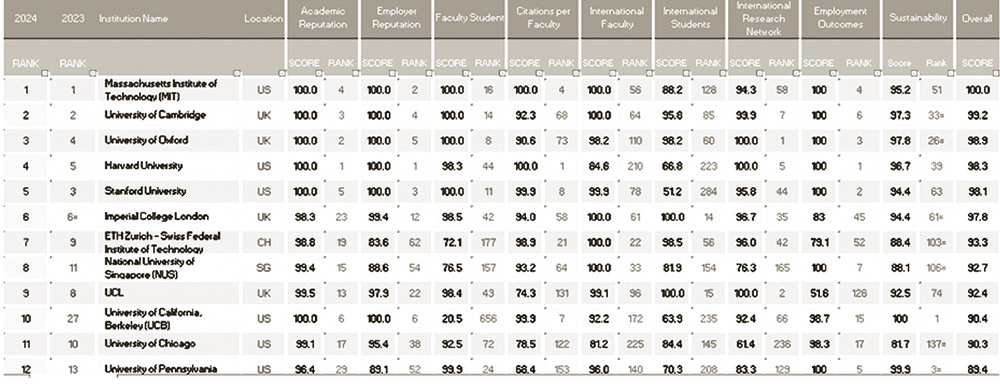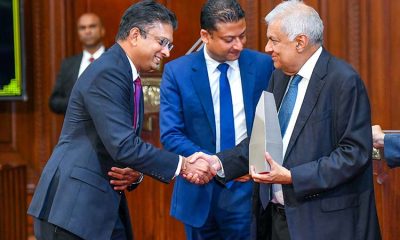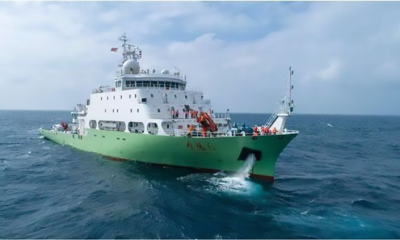Features
A LUCKY LEOPARD…but will his luck hold?

by Rohan Wijesinha
Last week, a video went viral, on all forms of social media, showing a leopard escape the wrath of a herd of buffalo when it attempted to snatch a young calf from their midst. This remarkable and rare piece of footage, taken by a fortunate visitor to the Yala National Park, showed a male leopard attempt to grab a calf from the buffalos’ midst and get immediately, and ferociously, set on by the angry bovines, intent on protecting their own.
The leopard finally had the good sense to let go of its potential meal for sake of survival, and was chased up a tree by the livid buffalos. It was lucky to get away with just the superficial wounds that it seemed to have sustained. Had he missed his footing and stumbled, and the buffalo got to him, especially against a tree, he may not have lived to learn from the error of his ways. Leopards do predate on buffalo calves, by stalk and strategy, but rarely do they attempt it so boldly from the midst of a group of these half ton beasts whose horns can slash through muscle and sinew.
Wonder…on a wonder…
Apart from this amazing audiovisual capture, the fact that it was probably the most shared video of the week, and broke records for ‘hits’ and ‘shares’ on most conservation group sites, locally and internationally, show how powerful are the natural wonders of nature in stimulating the interest and passions of people, especially if filmed in the wilderness, of animals behaving as they normally would, wild and free. Any potential wildlife lover, the world over, would wish to have been in the place of the lucky person who filmed this, to see such a rare and exciting event unfold before their very eyes. And this is just one event, in one protected area of Sri Lanka. This country is blessed with so many more.
…but for how long more?
Yes, it is still possible to see such wondrous events in Sri Lanka’s National Parks and protected areas, but for how long more? Where once the main crisis for conservation was the human – elephant conflict, it has now spread to that of human – wildlife crises. This has been brought about by unplanned, politically shortsighted development that has resulted in the destruction of once pristine habitat that was home for these wild creatures. Inevitably, in their quest for survival, for food and shelter, they must now increasingly run the gauntlet of entering human habitations that were once exclusively their own. They are then cast as the villains and killed, sometimes in the most brutal of ways.
Last year saw a record number of leopards killed, including a rare black leopard; most were caught in snares that either slowly strangled them to death, or if still found alive, died soon after as the steel wires crushed their internal organs beyond medical repair. Most of these killings have been targeted attacks, with the body parts of the animals removed for their supposed medicinal properties. It should be remembered that the Sri Lankan Leopard, Panthera pardus kotiya, is a sub-species unique to this country, classified as endangered on the Red List of the IUCN, and should be fiercely protected for posterity.
We need them
Sri Lanka is the one place in the World that leopards may be seen during the day and is why visitors, especially foreign, flock to the Yala and Wilpattu National Parks. Thirty nine percent of all foreign visitors to this country visit one of the National Parks. In 2016, the Yala National Park generated an estimated Rs. 7 Billion for the country’s economy (SLAITO Report). Leopards are apex predators and do not have to compete with lions, tigers and hyenas as do their counterparts in the other countries that host them. They have only man to fear; unless they have the mistaken temerity to charge into the midst of a herd of buffalo to snatch one of their calves.
Sri Lanka needs development, Planned Development, and the understanding that wildlife, if protected and conserved, are an important, and sustainable, source of foreign exchange to this country. Regrettably, with increased deforestation taking place, on the whims of those in power, and with no thought to the long-term consequences of their action or that of future generations, human – wildlife conflict is only going to increase, with casualties on both sides. It must here be remembered that one of the most important functions of the Department of Wildlife Conservation is the protection of most of the major water catchment areas of this country. No forests, then no rain. No rain, then no water. No water, then no life – wild or human.
This present carnage must stop before irreversible damage is done to the environment, and to all species it supports, including us humans. It is said that a leopard cannot change its spots…can we?
Features
Why are SL universities’ positions low in world ranking indices?
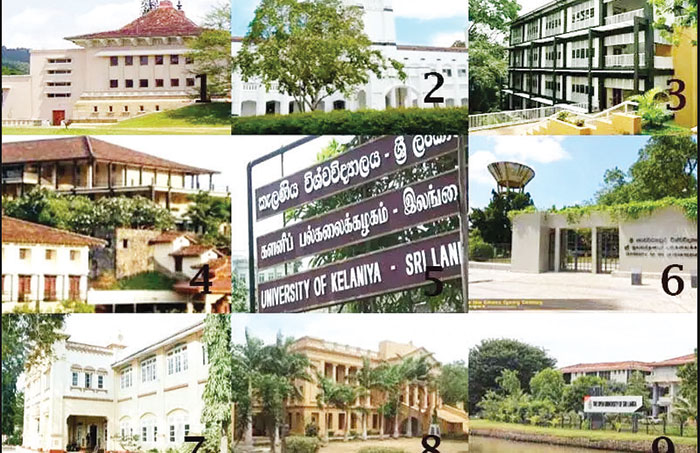
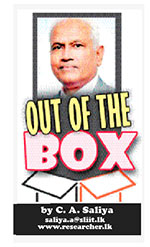 Arespected law firm in New Zealand, when advertising positions for apprentice lawyers, tends to overlook applications from graduates who have not attended top-ranked institutions. Hence, it becomes crucial for universities to achieve international high rankings. Beyond scenarios like job searches, there are several reasons why a higher ranking holds significance for a university:
Arespected law firm in New Zealand, when advertising positions for apprentice lawyers, tends to overlook applications from graduates who have not attended top-ranked institutions. Hence, it becomes crucial for universities to achieve international high rankings. Beyond scenarios like job searches, there are several reasons why a higher ranking holds significance for a university:
https://www.adscientificindex.com/university-ranking/?funding=All+Universities&country_code=lk
Source: https://www.topuniversities.com/world-university-rankings
Prestige, Reputation and Research
A higher rank enhances the prestige and reputation of a university both nationally and internationally. It signifies academic excellence, research prowess, and overall institutional quality, attracting top students, faculty, and researchers. A higher rank provides global recognition and visibility to the university, positioning it as a leader in higher education and research. This recognition opens doors to international collaborations, partnerships, and exchange programmes, enriching the academic and cultural experiences of students and faculty.
Higher-ranked universities tend to have greater research impact and influence. They attract top researchers, secure more research funding, and produce groundbreaking discoveries and innovations that address societal challenges and drive economic growth.
Competitiveness and Attracting Talents
A higher rank increases the competitiveness of the university in attracting funding, grants, and partnerships. Funding agencies, philanthropic organisations, and industry partners are more likely to collaborate with highly ranked universities, leading to increased opportunities for research, innovation, and economic development.
Universities with higher ranks are more attractive to talented students, faculty, and researchers. Top-ranked universities can recruit and retain the best minds in academia, fostering a vibrant intellectual community and facilitating knowledge creation and dissemination.
Higher-ranked universities typically experience higher student enrollment and retention rates. Students are drawn to universities with strong academic reputations, diverse programme offerings, and attractive campus environments, enhancing the university’s revenue and sustainability.
The reputation and network of a higher-ranked university can positively impact the career prospects and success of its alumni. Graduates from prestigious universities often have access to better job opportunities, higher salaries, and influential professional networks, contributing to their long-term success and the reputation of the university.
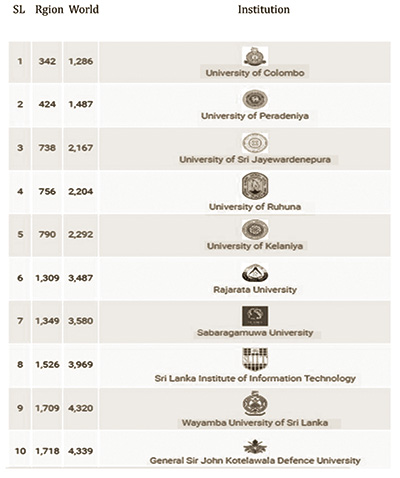 Overall, a higher rank serves as a symbol of excellence, attracting talent, resources, and opportunities that contribute to the continued success and advancement of the university. The tables provide global rankings of universities, as well as rankings specific to the South Asian region and Sri Lanka.
Overall, a higher rank serves as a symbol of excellence, attracting talent, resources, and opportunities that contribute to the continued success and advancement of the university. The tables provide global rankings of universities, as well as rankings specific to the South Asian region and Sri Lanka.
Several factors contribute to Sri Lankan universities being ranked low:
Quality of Education and Research: Some Sri Lankan universities struggle to maintain high standards of education and research due to factors such as outdated curricula, inadequate teaching resources, and limited access to modern technologies and learning materials.
Low levels of research output and innovation contribute to the low rankings of Sri Lankan universities. Factors such as limited research funding, inadequate research infrastructure, and a lack of incentives for faculty to engage in research can hinder the production of high-quality research outputs.
Faculty Quality and funding: The quality and professional development of faculty members play a significant role in the rankings of universities. Challenges such as brain drain, where talented academics seek opportunities abroad due to better prospects, and limited opportunities for faculty development and training can impact the quality of teaching and research. Issues related to governance and management, including bureaucratic inefficiencies, lack of transparency, and political interference, can affect the overall functioning and performance of universities.
Sri Lankan universities often face challenges due to limited funding and investment in higher education. Insufficient financial resources can impact infrastructure development, research facilities, faculty recruitment, and student support services. Inadequate infrastructure and facilities, including outdated laboratories, libraries, and IT infrastructure, can hinder the ability of universities to provide quality education and conduct impactful research.
International Collaboration and Recognition: Limited international collaboration and recognition can also contribute to the low rankings of Sri Lankan universities. Engaging in partnerships with international institutions, participating in global research networks, and obtaining accreditation from reputable international organizations can enhance the visibility and reputation of universities.
The role of university administration
The factor of governance and management plays a significant role in influencing the encouragement or discouragement of research publication in quality journals indexed in databases like Scopus or Web of Science.
However, there seems to be a prevailing trend of publishing solely for the sake of meeting publication quotas in local journals that lack indexing, primarily to accumulate points for career advancement purposes.
Bureaucratic Inefficiencies: Inefficient bureaucratic processes within universities can create barriers and delays in the research publication process. For instance, complex administrative procedures for obtaining approvals such as ethical approval, funding, or accessing resources can discourage faculty members from pursuing research or submitting their work to quality indexed international journals. The time and effort required to navigate bureaucratic red tape may outweigh the benefits of publishing prestigious journals.
Lack of Transparency: Universities that lack transparency in their governance and decision-making processes may create an environment where researchers feel uncertain or insecure about the publication process. Without clear guidelines, criteria, and expectations for research publication, faculty members may hesitate to invest time and resources in producing high-quality research or submitting it to reputable journals. Additionally, concerns about favoritism, bias, or arbitrary decision-making in the publication process can undermine trust and confidence among researchers.
Political Interference: Political interference in university governance can have detrimental effects on research culture and academic freedom. When political agendas influence decision-making related to research priorities, funding allocation, or editorial policies, it may compromise the integrity and independence of academic research. Researchers may feel pressured to align their work with political interests or avoid controversial topics that could jeopardize their careers or funding opportunities. In such environments, there may be a tendency to prioritize quantity over quality in research output, with less emphasis on publishing in prestigious journals indexed in databases like Scopus or Web of Science.
Role of the Ministry of Education and the University Grant Commission
The University Grants Commission (UGC) serves as the governing authority for the university system in Sri Lanka, guided by nicely crafted vision, mission, and goals as per their website; https://www.ugc.ac.lk/
The absence of goals focused on “high impact research,” as outlined in the mission statement, highlights a potential gap in the UGC’s initiatives. This oversight may contribute to the lack of emphasis on promoting research publication in high-quality international journals, which is crucial for achieving higher ranks in ranking indices.
Further, in the promotion process for academics to the positions of Associate Professors and Professors, the University Grants Commission (UGC) has issued circulars outlining a point system; UGC Circular No. 723 of 12 December 1997, 869 of 30 November 2005, and 916 of 30 September 2009.
According to these circulars, a senior lecturer in the university system must accumulate 105 points to qualify for the Professor position, with a minimum of 55 points required from Research and Creative work. However, the conditions for claiming these points are relatively lax, requiring only that publications appear in numbered volumes and pass peer review. While there are no restrictions on maximum points, a critical issue remains: there is no minimum requirement for points articles published in globally recognized indexed journals.
Consequently, some faculties of certain universities resort to publishing their own “journals” and organizing “international conferences” to claim points without conducting rigorous research or publishing them in internationally reputed indexed databases.
Crucially, there should be a cap on the maximum points awarded for local publications, even if they are published by “recognized publishers,” a term not clearly defined in the circular. Publishers like Sarasavi, Vijitha, and Gunasena are well-known, yet citations from their publications are not acknowledged by WoS, Scopus or Google, thus not factored into rankings by agencies.
The Way out.
To boost Sri Lankan universities in global rankings, the UGC and Ministry of Education should revise their missions and goals to include more research and internationally recognized indexed publications for universities and ensure clear communication to prospective university staff.
Staff should receive more than just recognition for publications, with rewards such as cash incentives and public appreciation. Making research projects compulsory for undergraduates, postgraduates, and masters, and incentivizing manuscript submissions with marks or cash rewards, could further motivate students.
Conclusions
Overall, addressing issues related to governance and management is essential for fostering a conducive environment for research publication in quality indexed journals. Universities need to streamline administrative processes, enhance transparency in decision-making, and safeguard academic freedom from political interference. By promoting a culture of excellence, integrity, and meritocracy, universities can encourage faculty members to actively engage in research and contribute to knowledge dissemination through publications in reputable indexed journals.
Addressing these challenges requires concerted efforts from various stakeholders, including government authorities, university administrations, faculty members, students, and funding agencies. To elevate Sri Lankan universities in global rankings, the UGC and Ministry of Education should update their missions to prioritize research and internationally recognized publications. Additionally, staff should be rewarded beyond recognition, with incentives like cash rewards and public appreciation. Implementing compulsory research projects and incentivizing manuscript submissions can enhance student motivation at all academic levels.
(The writer, a senior Chartered Accountant and professional banker, is Professor at SLIIT University, Malabe. He is also the author of the “Doing Social Research and Publishing Results”, a Springer publication (Singapore), and “Samaja Gaveshakaya (in Sinhala). The views and opinions expressed in this article are solely those of the author and do not necessarily reflect the official policy or position of the institution he works for. He can be contacted at saliya.a@slit.lk and www.researcher.com)
Features
Revival of Premadasaism: Way forward for Sri Lanka
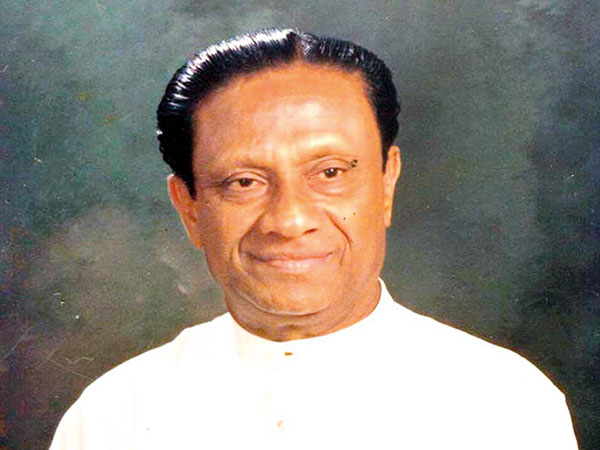
By Dr. Mahim Mendis
Sri Lanka President’s Scholar, British Chevening Scholar, National University of Singapore Scholar and US State Department Post Doctoral Scholar
I was socialised in my childhood by an ardent Samasamajist father in Moratuwa. However, I became disillusioned in my youth, as I witnessed the ground level actions of the Samasamaja Party, working with Feudalists who pretended to be progressive.
I was not surprised when the LSSP was rejected by voters in the 1977 election. The void created in me was filled by Vijaya Kumaranatunge, when he formed the Mahajana Party with a principled position on social justice. When the JVP brutally murdered Vijaya in 1987, my hopes were dashed.
By the time I entered Kelaniya University, I was becoming a convert to ‘Premadasaism’ – the deep convictions found in the words and deeds of Ranasinghe Premadasa that I diligently followed.
I was mesmerised by the speeches of Premadasa, who articulated his pro-poor ideology of the UNP, the party, that my father opposed all his life. Today, I am convinced that Sri Lanka is fortunate that Premadasa has left for this nation a son named Sajith, who is inspired by Premadasa’s ideology and his simple lifestyle.
Pragmatic and Practical
While academics continue to talk about grand development theory, Ranasinghe Premadasa spent his life evolving a truly Sri Lankan development model to ensure and enable common people to reach excellence in all sectors of human development.
Youth of the land should not forget that Premadasa had the foresight to build the first ever, Day and Night Cricket Stadium, at Kettarama, long before we won the World Cup in 1996 and transformed Sugathadasa Stadium in line with top international benchmarks, encouraging younger athletes to reach excellence at the Olympics. He believed that Damayanthi Darsha, the South Asian Games Gold medalist should access the best schools of the land, paving the way for her to be educated at Ladies College, Colombo. He was impatient to see the bright rural youth shine unlike feudal politicians who preached one thing to the people and practiced another for their own children.
To serve the needs of common people, he established the Sevana Sarana Foster Parents scheme, to provide for the material needs of children. For this he mobilised the affluent to be socially sensitive to the bright, but poor children.
Today, it is not surprising to see his son Sajith inspired to do all this even before he forms a government.
Birth of Premadasaism
Premadasa harboured these grand ideals of Pro-People Development when he was a child of 15 years of age. He established the Sucharitha Movement in his own habitat Keselwatta, in the Colombo Central electorate.
Premadasa’s vision was far beyond Marxism of Kueneman or Communist Trade Unionism of L. W Panditha and the Temperance policies of F.R. Senanayake. He saw the beauty of holistic human development, balancing physical and material self-sufficiency of people with spiritual, emotional, and cultural self-sufficiency. He knew clearly that building a ‘Total Man’, would contribute towards a holistic ‘Total Society.’
As a social worker at the early age of fifteen, he celebrated the First Anniversary of the Sucharitha Movement with S. W. R. D. Bandaranaike and Mrs. Bandaranaike as Chief Guests, long before Bandaranaike ever thought of forming the SLFP.
Having entered politics in his youth under the tutelage of the eminent Labour leader A. E. Goonesinghe, Premadasa realised just as his political guru Goonesinghe realised, that Marxist inspired politicians coming from affluent backgrounds had severe limitations in their capacities as they were overwhelmed by their own unparalleled revolutionary rhetoric that made them lag in actions.
Premadasa would turn in his grave if he heard the emotionally and spiritually sterile NPP/Marxist rhetoric of today that husbands should remunerate their wives for their domestic labour.
Communicating Revolutionary Ideas in a Language Common Man Understood
Premadasa soon became the Youth Front Leader of AE Gunasinghe’s Labour Party and was able to explain about social emancipation to the common people- what Marxists like Peter Kuenemann in Central Colombo or Dr. N. M Perera of Ruwanwella could not explain in lingo understood by the poor.
When Premadasa opted to join the UNP, its leader Dudley Senanayake had the wisdom to appreciate this capacity, pitting young Premadasa against Dr. N. M Perera in Dr. Perera’s own electorate Ruwanwella, at the 1956 Parliamentary elections.
The election proved that the Marxist giant Dr. Perera could defeat young Premadasa, only by a margin of mere 6,228 votes.
Ironically ten years later, Dr Peter Kueneman, Dr. Colvin R. De Silva, Dr. S. A. Wickramasinghe and the other LSSP and Communist Party Parliamentary stalwarts had to retire from Parliamentary politics when they were politically annihilated by the UNP campaign that was led by the same Premadasa who was Deputy Leader of the UNP at the 1977 Parliamentary elections.
Humility of Premadasa and Arrogance of Distractors
President Premadasa was an extraordinary leader with a broad imagination. He was prepared to embrace Oxford educated Susil Siriwardena, a former Theoretician of the JVP, and listen to Wijeweera, attending conscientiously the proceedings of the Criminal Justice Commission in the aftermath of the First JVP uprising in 1971.
He extended his hand of friendship to them with conviction. However, Wijeweera was not prepared. Susil, who was a JVP theoretician, was wiser in correctly perceiving the mind of Premadasa.
The difference between Premadasa and Wijeweera, as my respected friend Dr. Dayan Jayatilleke makes clear is that unlike Wijeweera, Premadasa saw no place for violence in social system change as violence would have to be suppressed by the State at a severe cost to the very people whom they tried to emancipate. Ironically, JVP failed to appreciate this, due to arrogance on their part as stated by Dr. Jayatilleke in a recent interview with Kusum Wijetilleke- a trait that they still have not shed due to the inherent tendency to overestimate themselves.
In the late 1980’s, Premadasa appointed the National Commission on Youth Unrest, chaired by Professor G. L. Peiris, who made serious recommendations such as meritocracy, based employment and youth participation in politics.
Professor Peiris, who was appointed Vice Chancellor of Colombo University by President Premadasa, and Founder Chair of Pohottuwa, recently opted to join with Sajith Premadasa as he was convinced that Sajith.
Premadasa’s as a Champion of Inclusive Development
The 1978 Constitution purposefully alienated anti-establishment as well as ethnic minority parties from being represented in parliament. For this, JR Jayewardene’s Constitution had a purposeful, but unrealistic cut off point of 12 % in electoral performance for representation.
The present-day JVP should appreciate that Premadasa not only released more than 1,000 JVP activists when he came to power but brought down the cut off point for representation to 5%. Today, the JVP is represented in parliament, together with ethnic minority parties which continue to advocate shared political power.
While progressive Sri Lankans appreciate these social democratic political reforms, the very beneficiaries of these policies may not appreciate what Premadasa achieved for them with his powerful ethos of inclusive, value centered development for the common good of all Sri Lankans. However, many people will remember him as a genuine seeker of a new Social Contract.
Knowing Difference Between Extreme Capitalism and Extreme Socialism
Truly, cultured men and women have the capacity to be thankful for the progressive measures taken by Ranasinghe Premadasa. He was a true embodiment of social democracy, governing the entire social, political, cultural, and moral order. He was not a mere propagator of a social market economy, when he took over leadership from a right wing, J.R. Jayewardene led the UNP that tried to deprive Deputy Leader Premadasa of his well-earned presidential candidature in 1989. The same right-wing forces in the UNP, tried to impeach him together with Feudalist sympathizers, who lost all their social status due to Premadasaism
Cost of Disowning Premadasa Programme and Vision
Ironically, the so-called educated people of the land, who were found guilty of bankrupting the Sri Lankan economy are among those who disowned the Premadasa legacy that brought recognition, human dignity, and prosperity to our people.
As emphasised by world renowned social scientist, Dr. Howard Nicholas in an interview with Kusum Wijetilleke, his pessimism about Sri Lanka, turned into great optimism in late 1980s with the pro-people contribution of Ranasinghe Premadasa. This, as he says, was a time Sri Lanka was in a perilous condition with a total breakdown of institutions, aggravated by JVP and LTTE terrorism.
Promise for the Future: The Need for a Likeminded Leader
We need a visionary leader with the right mindset with a heart for the poor and for those who can generate wealth and transform Sri Lanka. We know that the options are very few. The heart and the mind of Premadasa is what is absent in the very people that Premadasa groomed for leadership, including the current President, Ranil Wickramasinghe.
Today, the only hope we see for our nation is Sajth Premadasa; Premadasa’s son who has the courage and foresight to commence an unprecedented Social Democratic programme.
Ranasinghe Premadasa, expounding his grand development vision as far back as 04 April, 1973, stated:
“Political power has been diffused amongst the people through the exercise of the franchise. In like manner, the economic wealth of the country should also be diffused amongst the people. We should evolve a scheme under which the public sector, the co-operative sector, the private sector, and a combination of all these three sectors – a joint sector – could function in competition with each other. Such competition will bring the maximum benefit to the people who need not become slaves of either a public or private monopoly. The government should ensure through its legislative and planning processes that the people participate in all aspects of development without allowing monopolies — state or individual.”
As a petitioner of the historic Supreme Court Case, in 2022, on bankrupting of the economy, which led to a historic verdict in favour of our petition, I would not have been moved to file action on behalf of the country’s entire citizenry, if not for my respect for the Premadasa ideology, which is continued and adapted to meet the challenges of modern Sri Lanka by his son, Sajith Premadasa.
Features
No escape from international human rights scrutiny

by Jehan Perera
In March 2020, the Sri Lankan government believed that the massive mandate President Gotabaya Rajapaksa had received gave it a licence to get out of the cycle of UN Human Rights Council resolutions by unilaterally opting out of the process. It announced that it would no longer consider itself bound to implement the resolution in force at that time. It stated its position was “backed by a people’s mandate and is in the interest of Sri Lanka and its people, instead of opting to continue with a framework driven externally that has failed to deliver genuine reconciliation for over four and half years.” However, the government also sought to keep itself within the framework of the UN system. The government stated that within a new framework of national reconciliation it was proposing it would continue to welcome the visits, advice and technical support from the UN system.
The re-emergence of the Easter Sunday bombing of 2019 into the mainstream of political debate is bound to have both domestic and international political consequences. Presidential elections are scheduled for October the latest. The UN Human Rights Council will meet in Geneva in September. The role played by Cardinal Malcolm Ranjith who gives leadership to the Catholic Church in the country is proving to be important in both. He has openly accused the government of being unresponsive to their search for the truth and justice. He complained that he and other members of the church had addressed a letter to the president “calling for a fresh and independent investigation into these attacks, but not even a letter of acknowledgement was sent to us.”
In a recent media interview, Cardinal Malcolm Ranjith stated that two political parties had met him and submitted their proposals for investigations of the Easter bombing if they win the forthcoming elections. The Cardinal has called upon those in his church not to vote for parties that have failed to make a commitment to truth and justice and presented concrete plans regarding this. The implications of this will have a bearing on the Catholic vote at the forthcoming elections. In addition, the Cardinal has announced that the Catholic Church is planning to present a proposal to the UNHRC. This is likely to have a detrimental effect on the government’s plan to extricate itself from the UNHRC process in Geneva.
OTHER CONFLICTS
The previous government’s bid to extricate itself from the UNHRC resolution by the strategy of unilateral withdrawal was not successful. Instead it led to a stronger resolution being passed the next time around which set up a special monitoring mechanism in Geneva to collect and safeguard evidence of human rights violations in Sri Lanka. This is especially worrisome to those in the government, especially those who can be accused of having violated human rights, as it opens the door to prosecution by any government or individual who files a case in an international court that accepts the principle of universal jurisdiction.
President Wickremesinghe is generally believed to have a special relationship with the international community and particularly with those Western countries that give special attention to international human rights. There has been considerable media coverage of his easy familiarity with heads of states at international conferences where the top leaders of the world fraternize with each other and with him. His latest achievement was in welcoming the President of Iran to Sri Lanka as a state guest at a time when the world is on tenterhooks due to Iran’s open clash with Israel which is backed by the Western world. The state media reported that “As in other countries, many people in Sri Lanka thought that the Iranian President Dr. Ibrahim Raisi would cancel the visit at the last minute. The current issue with the West is the proximate cause of this. But it is President Ranil Wickremesinghe who is leading Sri Lanka on a Non-Aligned path without angering the West and without angering the neighbour.”
There is a further reason for believing that Sri Lanka might be able to surmount the challenge of the UNHRC at the present time. This is due to the change in the international environment in which the Israel-Palestine conflict has taken a special place with the intensity of violence in Gaza exceeding that of Ukraine. These are both ongoing conflicts which ought to take priority in contrast to the Sri Lankan conflict which ended 15 years ago. Unlike Ukraine and Gaza, Sri Lanka is today a country without large-scale violence. Indeed, it is remarkable that there has not been a single incident of large-scale violence after the end of the war except for the mystery of the Easter bombing to which answers are not being found.
HIDDEN SUFFERING
International tourist guide books have selected Sri Lanka as the safest country in the world for a single woman to travel through on account of warmth and civility of the people and, of course, a well-functioning security system. In addition, where the post-war situation is concerned, the government is able to show a plethora of state mechanisms, ranging from multiple commissions of inquiry, the Office on Missing Persons, the Office of Reparations and most recently a Commission for Truth, Unity and Reconciliation which will be established soon. On the other hand, though Sri Lanka is at peace and able to offer a standard of hospitality that is seeing a boom in tourist arrivals, there is pain and suffering inside the society that needs to be taken care of and not neglected.
The largest scale of pain and suffering is due to the economic deprivation that suddenly hit people who were making ends meet, but who have found for the past two years that prices have tripled whilst their salaries remain the same. The World Bank’s most recent study on the impact of the economic collapse states that poverty has increased over the past four years—from 11 percent in 2019 to almost 26 percent in 2024 in Sri Lanka. It further states that approximately 60 percent of Sri Lankan households have decreased incomes, with many facing increased food insecurity, malnutrition and stunted growth.
The decision of Cardinal Malcolm Ranjith and the Catholic Church to take their unaddressed grievance to the UNHRC in Geneva is a sign of the pain and suffering due to injustice that continues to burn within the hearts and minds of people, especially those who fell victim and those who are involved with them. Whether or not Ukraine and Gaza figure in the forthcoming resolutions of the UNHRC, it can be expected that Sri Lanka which has been on the agenda will continue to remain on the agenda. Sustaining the present peace in Sri Lanka requires that change that goes beyond a change of faces in government. It requires a new governmental commitment that the two main opposition political parties are promising and the government needs to match.
-

 Business5 days ago
Business5 days agoSri Lanka Resorts of Cinnamon Hotels & Resorts mark Earth Day with impactful eco-initiatives
-

 Business6 days ago
Business6 days agoDialog Axiata recognised as the Most Significant FDI Contributor by BOI
-

 Business6 days ago
Business6 days agoUNESCAP Technical Cooperation Highlights Report flags significant strides in its partnership with Sri Lanka
-

 Business7 days ago
Business7 days agoComBank crowned ‘Best Bank in Sri Lanka’ by Global Finance for 22nd year
-

 Business7 days ago
Business7 days agoCinnamon Lakeside Colombo welcomes Nazoomi Azhar as its new General Manager
-

 News4 days ago
News4 days agoGerman research ship allowed Sri Lanka port call after Chinese-protest led clarification
-

 News4 days ago
News4 days agoSri Lankan Oil and Gas exploration grinds to a standstill amid protracted legal battle
-

 Editorial6 days ago
Editorial6 days agoShocks from Bills


